eLearning Log in
Login here using your username and password
Product Description
Purpose
A product description is used to:
- understand the detailed nature, purpose, function and appearance of the product
- define who will use the product
- identify the sources of information or supply for the product
- identify the level of quality required of the product
- enable identification of activities to produce, review and approve the product
- define the people or skills required to produce, review and approve the product.
Composition
A product description includes the following:
- Identifier - Unique key, probably allocated by the change control method and likely to include the project name, item name and version number
- Title - Name by which the product is known
- Purpose - This defines the purpose that the product will fulfil and who will use it. Is it a means to an end or an end in itself? It is helpful in understanding the product’s functions, size, quality, complexity, robustness, etc.
- Composition - This is a list of the parts of the product. For example, if the product were a report, this would be a list of the expected chapters or sections
- Derivation - What are the source products from which this product is derived? Examples are:
- a design is derived from a specification
- a product is bought in from a supplier
- a statement of the expected benefits is obtained from the user
- a product is obtained from another department or team
- Format and presentation - The characteristics of the product; for example, if the product were a report, this would specify whether the report should be a document, presentation slides or an email
- Development skills required - An indication of the skills required to develop the product or a pointer to which area(s) should supply the development resources. Identification of the actual people may be left until planning the management stage in which the product is to be created
- Quality criteria - To what quality specification must the product be produced, and what quality measurements will be applied by those inspecting the finished product? This might be a simple reference to one or more common standards that are documented elsewhere, or it might be a full explanation of some yardstick to be applied. If the product is to be developed and approved in different states (e.g. dismantled machinery, moved machinery and reassembled machinery), then the quality criteria should be grouped into those that apply for each state
- Quality tolerance - Details of any range in the quality criteria within which the product would be acceptable
- Quality method - The kinds of quality method (e.g. design verification, pilot, test, inspection or review) that are to be used to check the quality or functionality of the product
- Quality skills required - An indication of the skills required to undertake the quality method or a pointer to which area(s) should supply the checking resources. Identification of the actual people may be left until planning the management stage in which the quality inspection is to be done
- Quality responsibilities - These define the producer, reviewer(s) and approver(s) for the product.
Derivation
A product description is derived from the following:
- product breakdown structure
- the end-users of the product
- quality management approach
- change control approach.
Format & Presentation
A product description can take a number of formats, including:
- a document, presentation slides or mind map
- an entry in a project management tool.
Quality Criteria
The following quality criteria apply to a product description:
- The purpose of the product is clear and is consistent with that of other products.
- The product is described to a level of detail that is sufficient to plan and manage its development.
- The product description is concise yet sufficient enough to enable the product to be produced, reviewed and approved.
- Responsibility for the development of the product is clearly identified.
- Responsibility for the development of the product is consistent with the roles and responsibilities described in the project management team organization and the quality management approach.
- The quality criteria are consistent with the project quality standards, standard checklists and acceptance criteria.
- The quality criteria can be used to determine when the product is fit for purpose.
- The types of quality inspection required are able to verify whether the product meets its stated quality criteria.
- The senior user(s) confirms that their requirements of the product, as defined in the product description, are accurately described.
- The senior supplier(s) confirms that the requirements of the product, as defined in the product description, can be achieved.
Extract PRINCE2 6th Edition. Copyright© AXELOS Limited 2017. Used under permission of AXELOS Limited. All rights reserved. You can purchase your own full copy here
